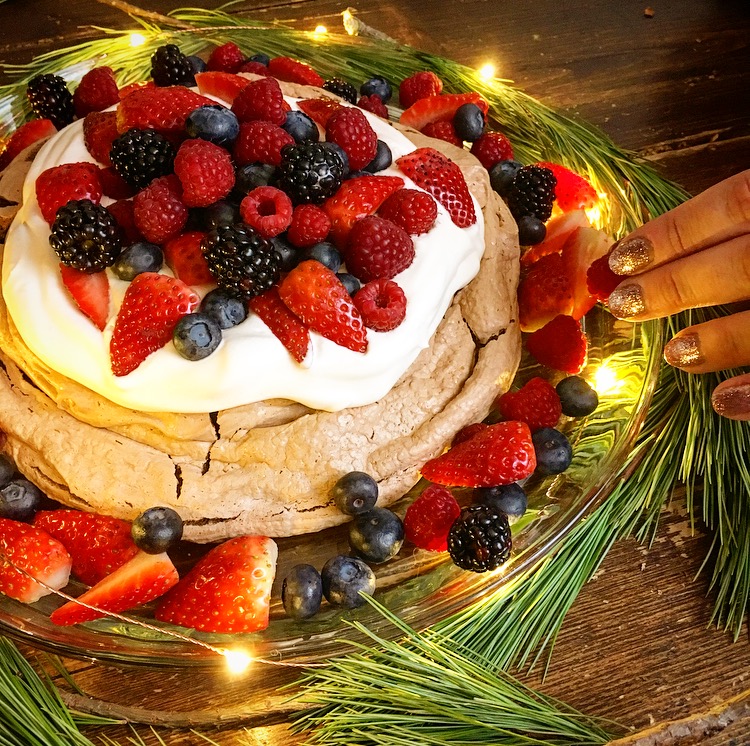Short Rib-Stuffed Agnolotti del Plin
Tools
- Kitchen Scale
- wooden board
- bench scraper
- cling wrap
- Dutch oven
- fat separator
- salad spinner
- rubber spatula
- food processor
- piping bag
- Sheet tray
- pasta machine
- pasta trimmer
- spray bottle with water
- spider or slotted spoon
Ingredients
Pasta dough
- 454g 00 Flour
- 270g eggs (approx 5 large eggs)
Roasted Braised Short Ribs
- 3.4 – 4lbs Short ribs, bone-in English cut, very meaty and lean
- (if you use boneless short ribs, you can get 2.5 lbs)
- Salt
- 1 medium Onion, roughly chopped
- 1 stalk celery, roughly chopped
- 1 carrot, roughly chopped
- cloves of garlic, mashed
- thyme
- rosemary
- sage
- bay leaf
- 10 whole peppercorns
- 4 cups brodo or good quality beef or chicken broth
- Northern Italian red wine (he uses Barbera D’Asti – save a splash of it for the sauce)
Pasta Filling
- Roasted Short Ribs
- Demi-glaze and fat from roasted short ribs
- large-leaf spinach – 1 bunch
- cloves of garlic, sliced thin
- 1 cup Parmigiano Reggiano
Pasta Sauce
- Semolina Flour
- 1 cup chicken stock
- Splash of red wine
- butter (he uses black truffle butter)
- Parmigiano Reggiano (to serve)
Method
Day One
Roasted Short Ribs
- In a pan, heavily salt the short ribs and leave to rest uncovered in the fridge overnight to dry the surface
Pasta Dough
- Beat eggs
- Pour flour onto wooden board, and make a well in the centre of the flour
- Pour the beaten eggs into the centre of the well, and use a fork to scramble the eggs, slowly working in the flour a little at a time
- When the mixture in the well reaches the consistency of thick pancake batter, use a bench scraper to fold in the flour, cutting the flour into the mixture. Continue cutting the flour into the mixture until you can form a ball of dough.
- Begin kneading the dough; if it’s too dry, use the bench scraper to remove any excess flour from the board. Continue to knead.
- Once the dough is well-kneaded, use your fingers to pinch together a seam. If the seam easily pulls apart, the dough is too dry. Wet your hands and work that water into the dough until a seam that’s pinched together doesn’t pull apart.
- Form the dough into a ball, cover in cling wrap, and leave to rest on the board for 15 minutes.
- Remove cellophane; Dough should be shiny and smooth after resting
- Begin kneading dough on a clean wooden board; the dough should seal itself, and if it doesn’t, repeat the steps with wet hands above.
- After 5-10 minutes of kneading, re-wrap the dough. If using the same day, let it rest 2-3 hours on the table. If using it the next day, refrigerate overnight.
- Remove the dough from the fridge at least an hour prior to use to come to room temperature
Day Two
- Remove dough from fridge 1-2 hours before using
Roasted Short Ribs
- Roughly chop onion, celery, and carrot, and mash garlic cloves
- On the stove top, pre-heat a dutch oven and some olive oil on medium-high. Once it’s hot, brown short ribs (starting meat-side down) on all sides really well.
- Increase heat slightly, and add in the vegetables (remove the meat if desired) and saute until slightly caramelized and there is fond in the pan.
- Reduce heat to low and add in 2 cups of red wine, and re-add the meat.
- Pre-heat the oven to 350.
- Cook until the wine is reduced and becomes thick and almost like a glaze.
- Add the herbs and peppercorns, stirring to combine, and then add the broth and bring to a boil.
- Put a lid on the pot, and place in the oven for two hours.
- Once the short ribs have roasted for two hours, use a fork to poke the meat and see how tender it is to gauge cooking time.
- Remove the lid, and continue to roast it uncovered for approximately an hour.
- After an hour, the broth should be reduced, the pot should be brown, and the meat should be browned and caramelized.
- Remove the meat, separating the meat from the bones, and set both aside.
- Using the remaining liquid and a rubber spatula, deglaze the pan.
- Pour the liquid out of the dutch oven and strain out the vegetables and herbs, squeezing to make sure all of the juices are reserved. Pour into a fat separator; the liquid will separate into a demi-glaze layer and a bone-marrow/fat layer. Set aside.
The Filling
- Wash and dry the spinach.
- Place a high-rimmed pot on the stove over medium-high heat, coating the bottom in olive oil.
- Toast the garlic slices in the olive oil until lightly browned.
- Add the spinach and smash it into the bottom of the pan, which will release the water quickly.
- Season the spinach mixture with salt, turn off the eat, and stirr, allowing the residual heat to cook the spinach until it’s a glossy dark green.
- Add short-rib meat to a food processor, removing any sinew.
- Add cooked spinach and 1 cup parmigiano reggiano, and 1/4 cup of the reduced demi-glaze (from the bottom of the fat separator) and a few tablespoons of the fat. Add salt and pepper to taste.
- Puree the mixture until smooth.
- Taste and adjust seasoning as necessary.
- Add filling mixture to a piping bag, and chill in the refrigerator.
Pasta
- Coat a sheet tray in semolina flour
- Unwrap dough; it should be bouncy, soft, and well-hydrated
- Cut the dough into quarters, and keep half covered
- Flatten the 1/4 of dough, trying to make it an evenly-flat rectangle or square
- Using your pasta machine, start at the 0 or widest setting and roll the dough through. Flip the dough, and run it through again.
- Repeat this process with higher or thinner settings until you get to the eight setting
- Once you have a nice long strip of dough, move it to the cutting board and cut it into 2-3 sheets, trimming the imperfect edges.
Filling the pasta
- Cut the tip off of the piping bag at about the thickness of your thumb.
- Pipe out 1-2 teaspoons of filing onto the past sheet, keeping a thumbnail of space between each piped filling.
- Once you’ve piped out a row of filling, spray the pasta and filling with water.
- Grab the edge of the dough closest to you and gently fold it over the filling to meet the other dough.
- With your index finger and your thumb, squeeze and pinch the space between each piece of filling, creating square pockets and sealing in the filling.
- Pass over a second time to pinch the flat pats between the fillings really well to ensure a good seal.
- Take the pasta cutter with the fluted side, and cut it on the flat side, about a thumbnail away from the filling.
- Pull the dough away from the board to ensure that it isn’t stuck.
- Spray the past again with water
- Cut in between each piece of filling, coming from the folded side, so that the pasta trimmer seals the remaining flap of dough
- Set on the sheet tray with the semolina
Cooking the finished pasta
- Bring a pot of water to a boil, when it’s boiling, add salt
- In a pan, add 1/4 cup of the demi-glaze, 1 cup chicken stock, and a splash of red wine, and reduce over medium heat.
- Once the water is boiling, add salt, and crank up the heat on the sauce to really reduce it.
- Add pasta to boiling water, reduce heat, and cook for 3 minutes.
- Using a spider, remove the past from the water and add it directly to the sauce. Continue cooking on high heat and reducing the sauce to a thick glaze texture that coats the past.
- Turn off the heat, and add butter, slowly tossing until the butter is completely melted.
- Serve with Parmigiano Reggiano and any additional sauce from the pan
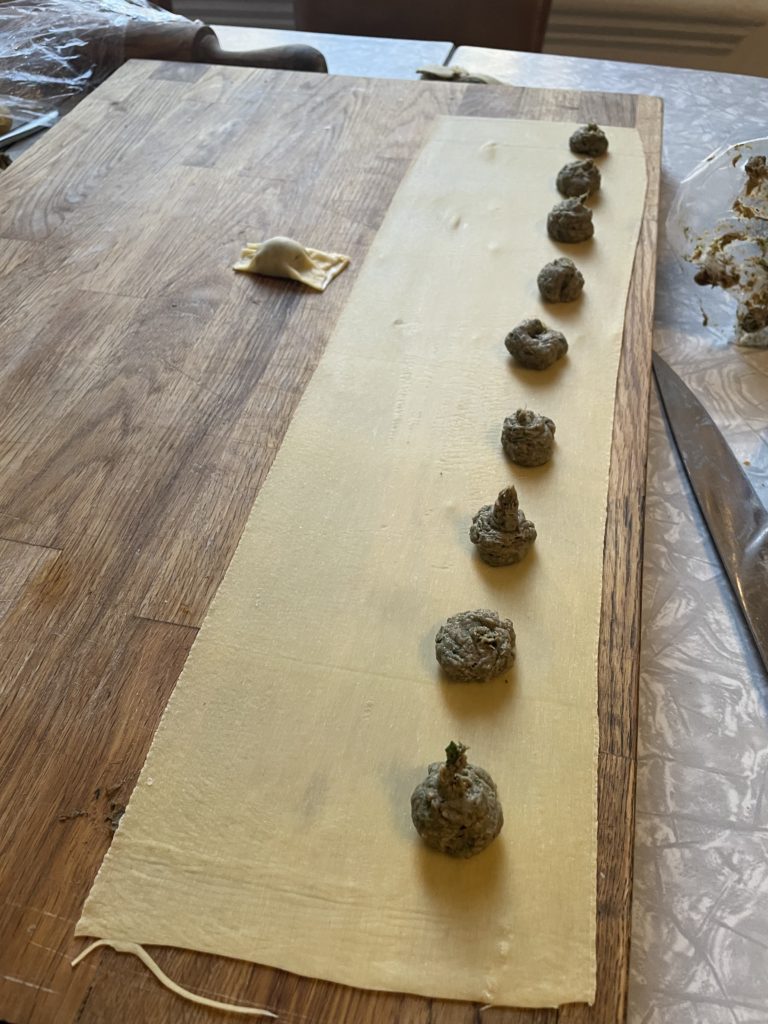
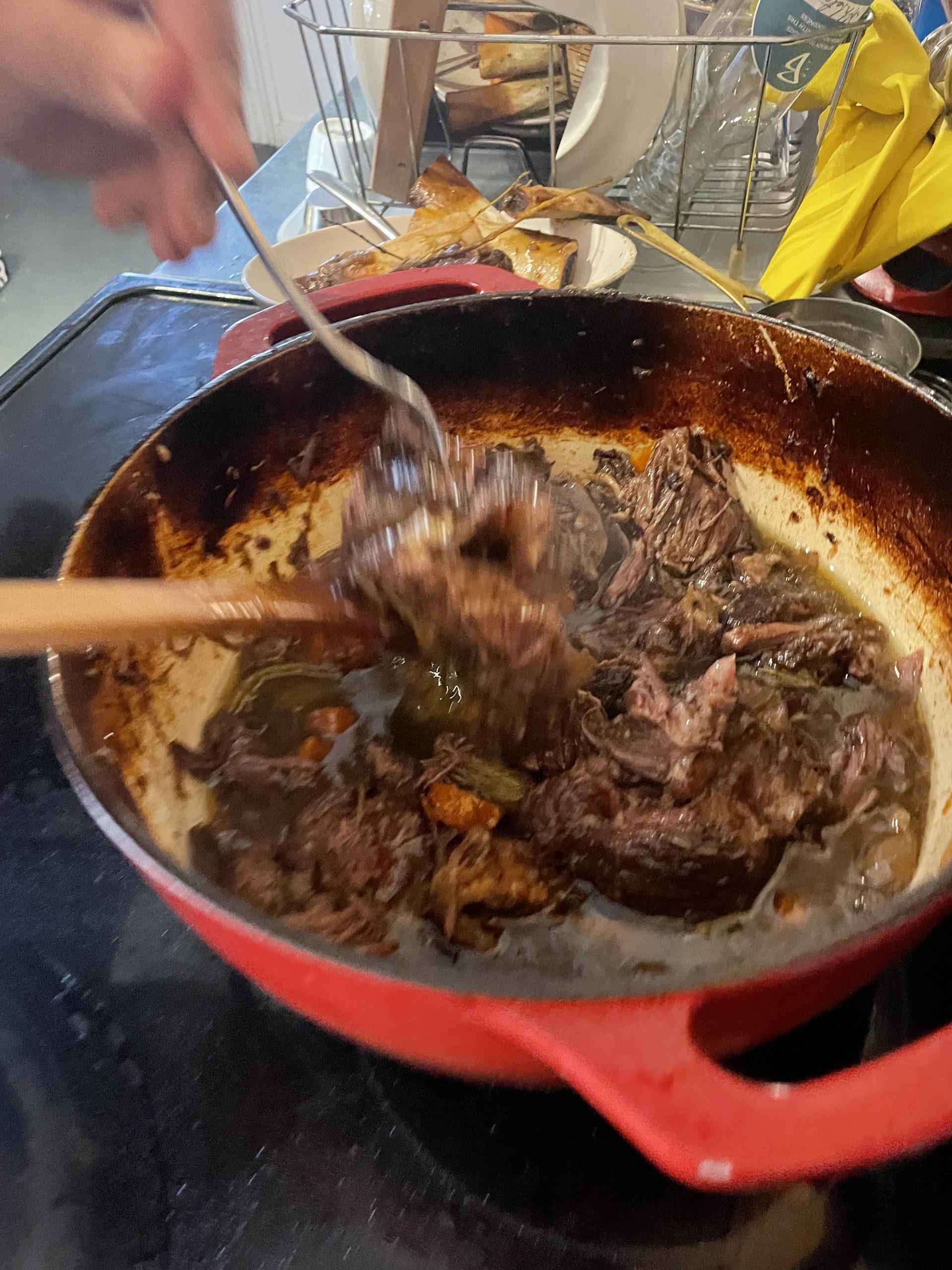
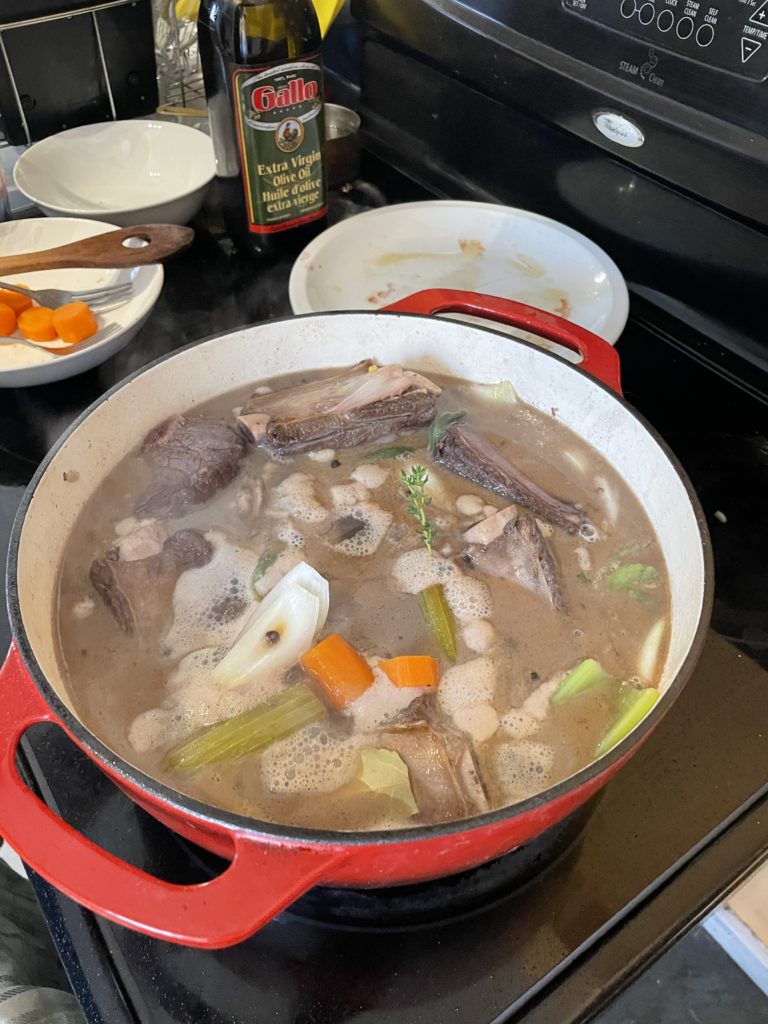

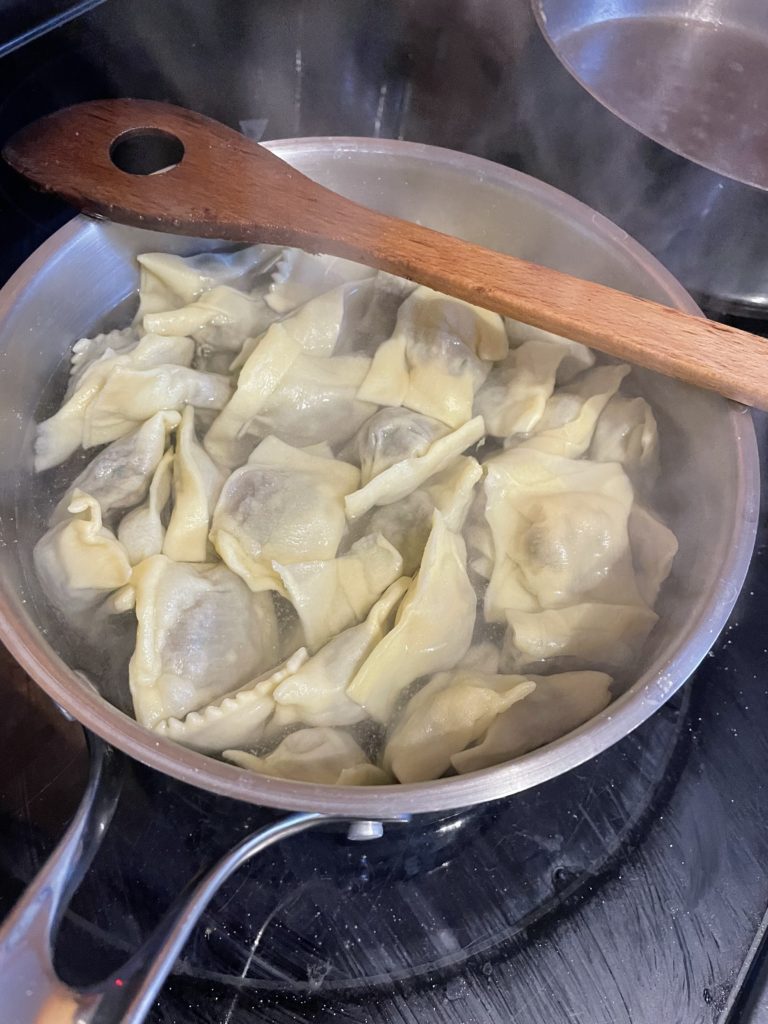
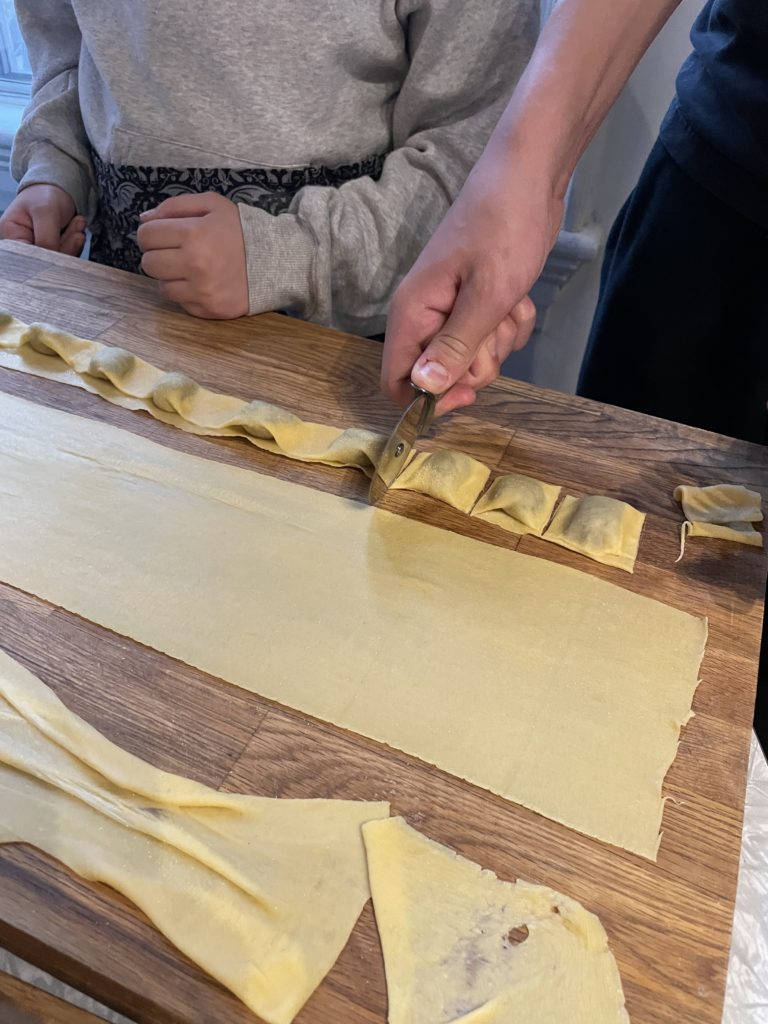
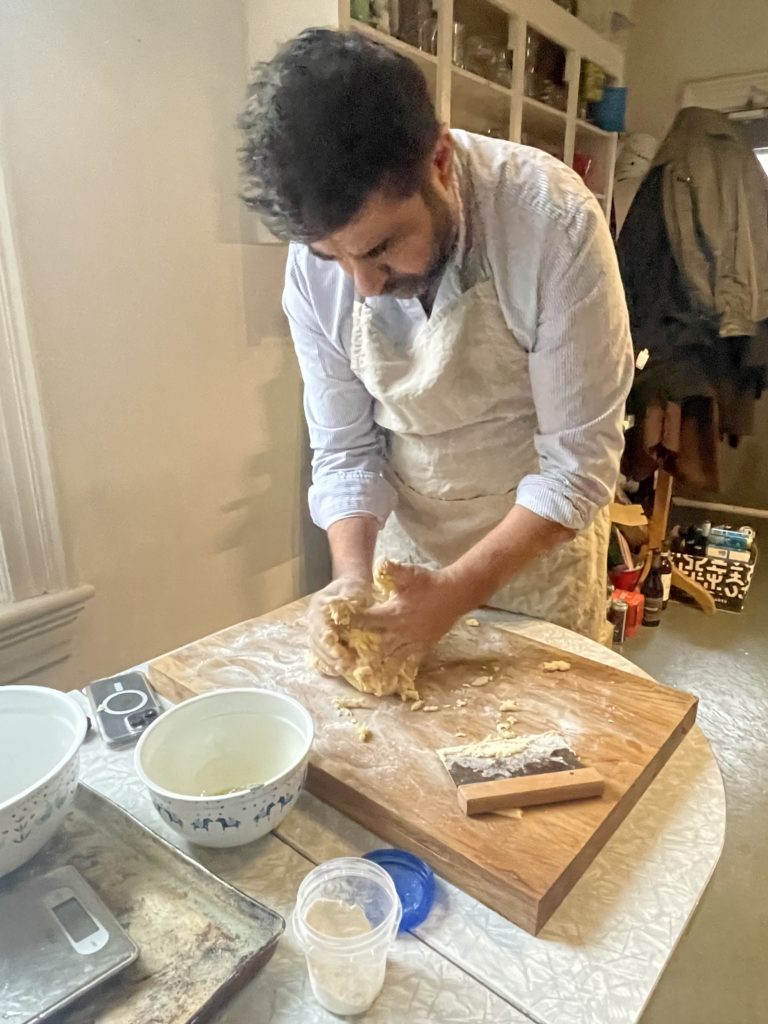
Alexi Chatzilias
tenant



